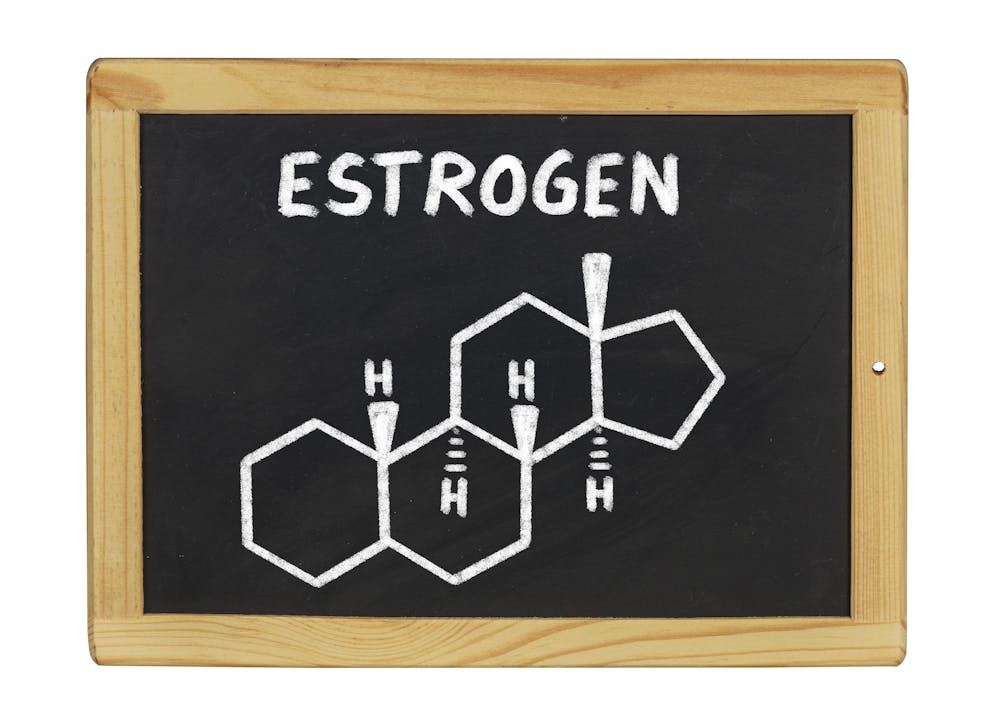Birth Control Can Give You Copper Overload
Let's talk about the unexpected connection between copper and birth control, particularly copper toxicity and birth control. Many women are choosing copper IUDs as a reliable form of contraception.
But what they might not realize is that this choice could be leading to copper overload in their bodies.
You see, copper, in small amounts, is an essential mineral. We need it for healthy bones, nerves, and blood vessels. However, like with anything, too much copper can be harmful.
This is where copper toxicity enters the picture, a topic that’s often overlooked in relation to birth control.
Copper IUDs and Excess Copper: A Recipe for Imbalance?
Copper IUDs work because copper is toxic to sperm. Copper essentially creates an environment within the uterus that's inhospitable to sperm, thus preventing pregnancy. While generally considered safe and effective, copper IUDs do release copper into the body.
While our bodies need copper, most of us already get enough from our diets. Adding a continuous source, like a copper IUD, to the equation can tip the scales.
This might lead to a buildup of copper, potentially resulting in copper toxicity, especially in those with elevated serum copper levels.

The Estrogen Connection: A Closer Look
Here’s where the plot thickens: estrogen, the dominant female hormone, and copper seem to have a somewhat complicated relationship. Studies show that estrogen dominance may lead to increased copper retention.
This becomes relevant in the case of copper IUDs and even oral contraceptive pills because they influence estrogen levels. Oral contraceptives can raise estrogen levels in some women.
While not all women on hormonal birth control will experience copper toxicity, those already prone to copper imbalances might find their issues exacerbated. High estrogen can lead to numerous symptoms.
Unmasking Copper Toxicity: Subtle Signs to Watch For
Now, copper toxicity is a bit of a chameleon—it can manifest in several ways, and its symptoms often mimic other common health conditions. Recognizing the potential symptoms is vital, especially if you're using a copper IUD or hormonal birth control.
If you are experiencing high levels of copper for a long term period of time, you may be experiencing copper toxicity. Here's what to look for:
Persistent fatigue or low energy, even after a good night's sleep.
Brain fog and difficulty concentrating – you just can't seem to think straight.
Mood swings and increased irritability – feeling like you’re on an emotional rollercoaster.
Anxiety or depression that's unusual for you.
Digestive problems, such as bloating, gas, constipation, or diarrhea.
Skin issues like acne, eczema, or rashes – your skin is your body's largest organ, and it often reflects what’s going on inside.
Changes in your menstrual cycle, like heavier or lighter periods, more cramping, or irregular cycles.
Low libido, or a decreased interest in sex.
Insomnia or difficulty sleeping through the night.
It is important to remember that these symptoms aren't exclusive to copper toxicity. They can also indicate various other health conditions. If you notice these signs and suspect copper might be a factor, consult a healthcare provider to get tested.
They can check your serum copper level to determine the root cause of your symptoms and help create a plan to restore balance.
Copper Toxicity Birth Control: Regaining Your Equilibrium
If you’re on a copper IUD or hormonal birth control and experiencing some of these symptoms, don’t panic just yet. There are several ways to address copper toxicity naturally:
1. Focus on Zinc-Rich Foods
Remember how we talked about copper and zinc having a bit of a balancing act in the body? Increasing your intake of zinc-rich foods is one natural way to potentially reduce excess copper.
This is because zinc competes with copper for absorption in the gut. Some tasty sources of zinc include:
Pumpkin seeds.
Grass-fed beef.
Chickpeas.
Lentils.
You could even enjoy a handful of pumpkin seeds as a snack or toss some chickpeas into your salads. Incorporating zinc-rich foods into your diet doesn’t have to be complicated or bland.
It may also help to limit your intake of copper-rich foods such as liver and shellfish.
2. Consider DIM
DIM, short for diindolylmethane, is a natural compound found in cruciferous vegetables like broccoli, Brussels sprouts, and cauliflower.
DIM has gained attention for its potential role in balancing estrogen levels, which is relevant to copper toxicity, especially if hormonal birth control is a contributing factor.
While more research is needed, some experts suggest that DIM may help the body metabolize estrogen more effectively, potentially easing copper overload symptoms.
DIM supplements are readily available but always consult your healthcare provider to determine if DIM is suitable for your situation and discuss appropriate dosages.

3. Support Your Gut with Probiotics
Remember those microscopic superheroes that reside in our gut, also known as probiotics?
Well, they do more than just aid digestion. Probiotics are live bacteria and yeasts that contribute to a healthy gut microbiome, and a balanced microbiome has far-reaching benefits—including influencing estrogen levels and nutrient absorption.
Some evidence suggests that maintaining a balanced gut microbiome can potentially play a role in mitigating copper toxicity. Including probiotic-rich foods in your diet is one delicious way to support your gut. Think:
Yogurt with live and active cultures.
Kefir.
Sauerkraut.
4. Explore Calcium D-Glucarate
Calcium D-Glucarate is a natural compound found in fruits and vegetables, and you can even get it in supplement form.
It plays a role in detoxification processes within the body, supporting the liver in removing excess hormones and toxins, potentially including excess copper.
While the research on calcium D-glucarate and copper toxicity is ongoing, it's often discussed in natural health circles for its potential to aid the body’s detoxification pathways. Before incorporating supplements like calcium D-glucarate, check with your healthcare provider.
5. Explore Alternative Birth Control Methods
If you’re concerned about the potential connection between copper toxicity and your current birth control method, discussing alternative options with your doctor or healthcare provider is a must.
There are various non-hormonal and hormone-based methods available, and finding the right fit depends on individual needs and preferences. Some women choose to switch to a birth control method that does not contain hormones, such as barrier methods.
Copper Toxicity Birth Control: It’s About Finding What Works For You
Deciding on the best type of birth control for you is a very personal decision that requires careful consideration. Factors such as your medical history, whether or not you want to have children, and your lifestyle can all impact your decision.
If you choose a copper IUD or another birth control method, it's wise to be mindful of potential side effects. This way, you can make proactive choices for your health.
Here is a table of the pros and cons of copper IUDs to help you evaluate if this is the right birth control method for you:
Pros of Copper IUDs | Cons of Copper IUDs |
Long-lasting and effective form of birth control | May cause heavier or more painful periods |
Hormone-free | May increase risk of pelvic inflammatory disease (PID) |
Can be used as emergency contraception | May perforate the uterus |
Reversible | Does not protect against sexually transmitted infections (STIs) |
Can be used by women who cannot use hormonal birth control | May cause copper toxicity in some women |
Copper IUDs contribute to copper levels. A metabolic study in the Obstetrics & Gynecology journal researched copper concentrations in healthy adults. Results indicated that copper/blood levels may be higher in those with IUDs.
More research on copper toxicity birth control is needed. For instance, does norethindrone/copper impact toxicity? There are also ethical considerations involved with medical research that need to be taken into account when conducting a clinical trial such as informed consent.
Contraceptive Copper
Copper-based birth control methods, such as intrauterine devices (IUDs), have become popular for their effectiveness and hormone-free approach. However, it’s important to be aware of the potential connection between these devices and copper toxicity symptoms.
Elevated copper levels in the body can lead to a range of issues, including fatigue, mood swings, digestive problems, and even cognitive disturbances.
Understanding this link is crucial for individuals considering or currently using copper IUDs, as recognizing the early signs of copper toxicity symptoms can help in managing and mitigating any adverse effects, ensuring both effective contraception and overall well-being.
Conclusion
While this is a lot to digest, remember that the relationship between copper toxicity birth control isn’t a one-size-fits-all equation. Many factors can influence copper levels, and it is important to approach this topic with a balanced perspective.
If you’re concerned about copper toxicity, consult with your healthcare provider to receive proper guidance, testing, and personalized recommendations for safely managing your health.
Self-treating is not advised, and seeking professional medical advice is crucial for accurate diagnosis and treatment.
Previous blog
Zinc Ability to Lower CortisolNext blog
The Best 3 Remedies for PsoriasisTags

Popular
08/21/2024
55K views
02/23/2025
46.3K views
11/18/2024
277.7K views
03/18/2024
11/21/2022




